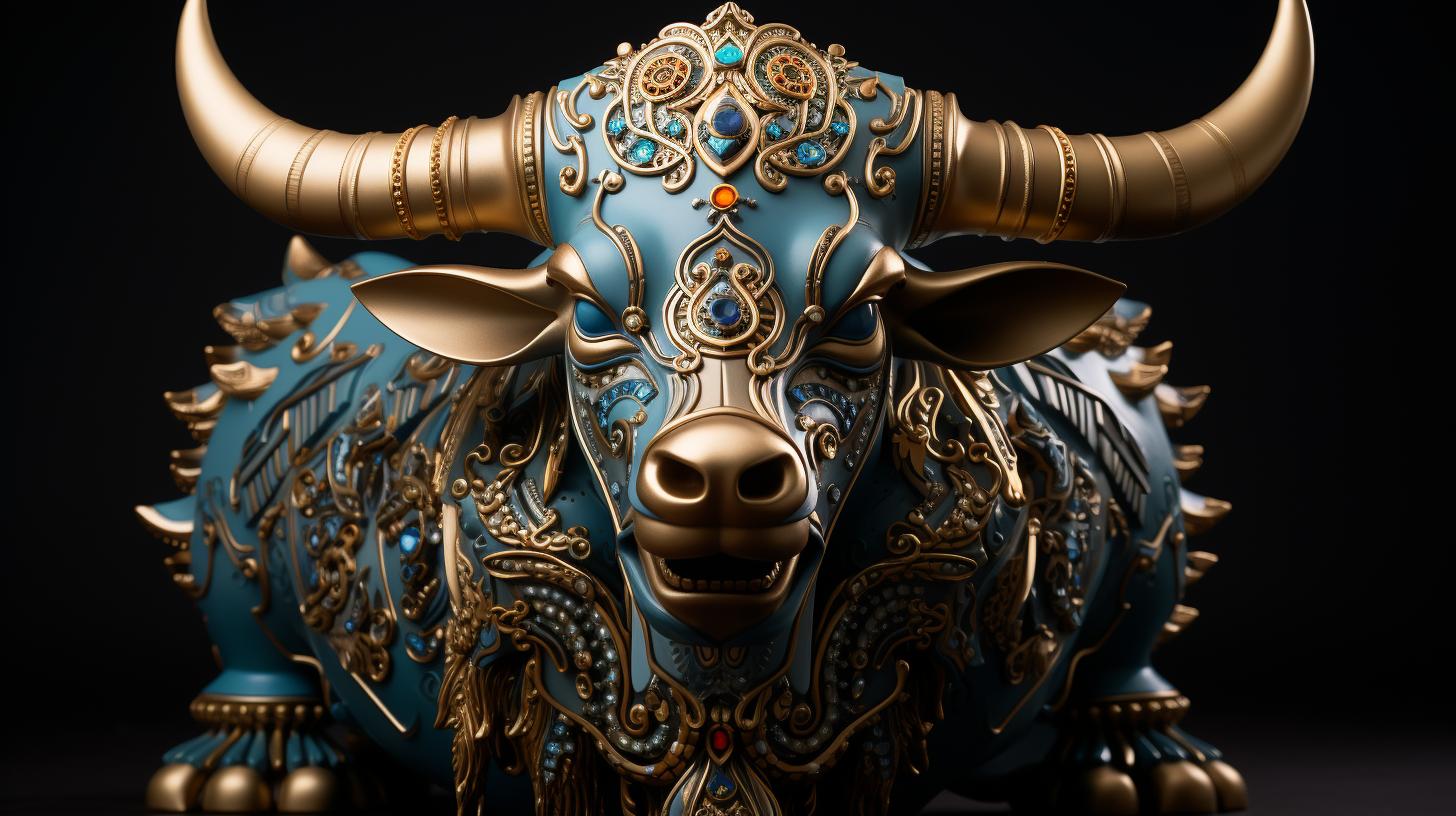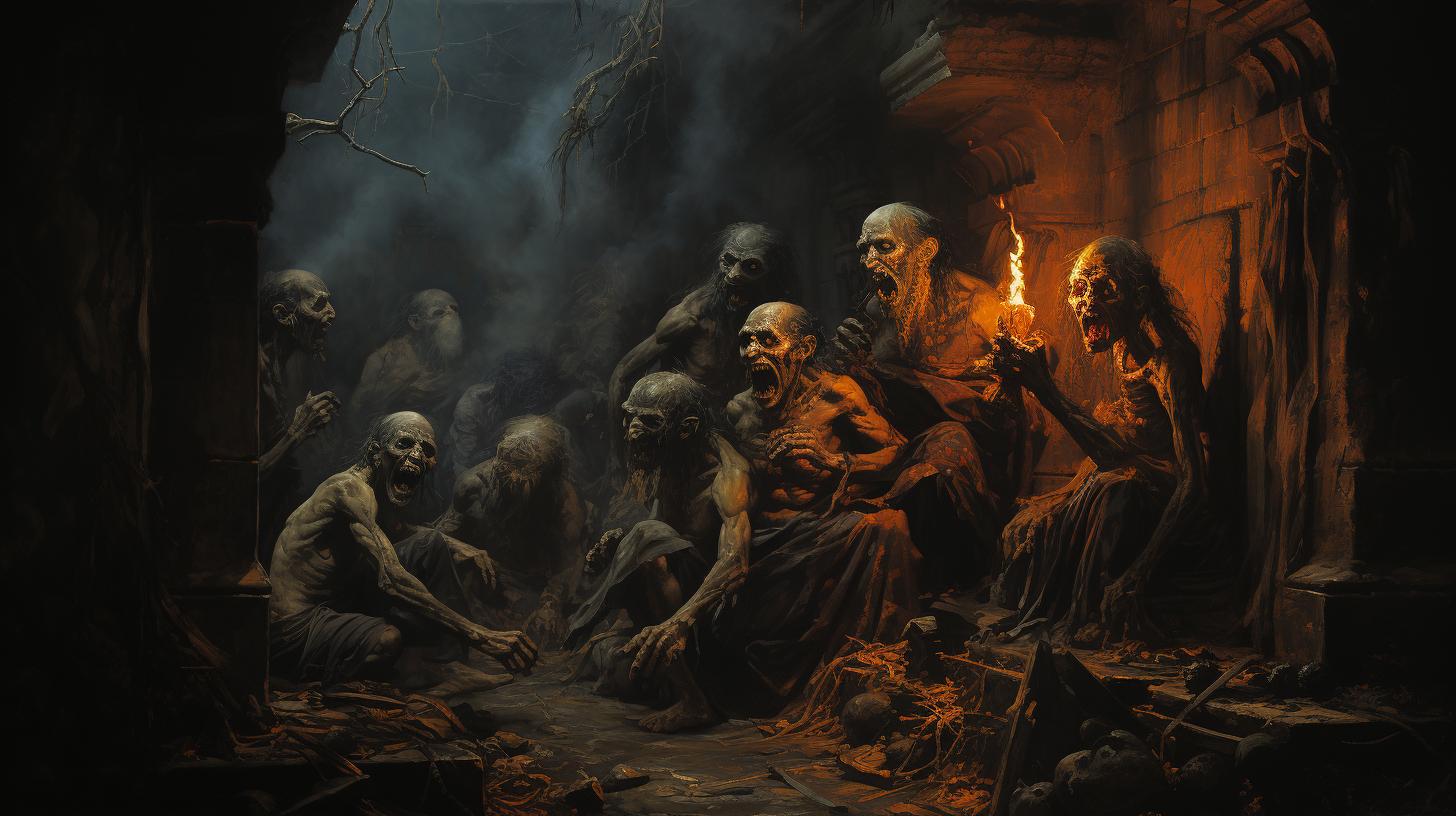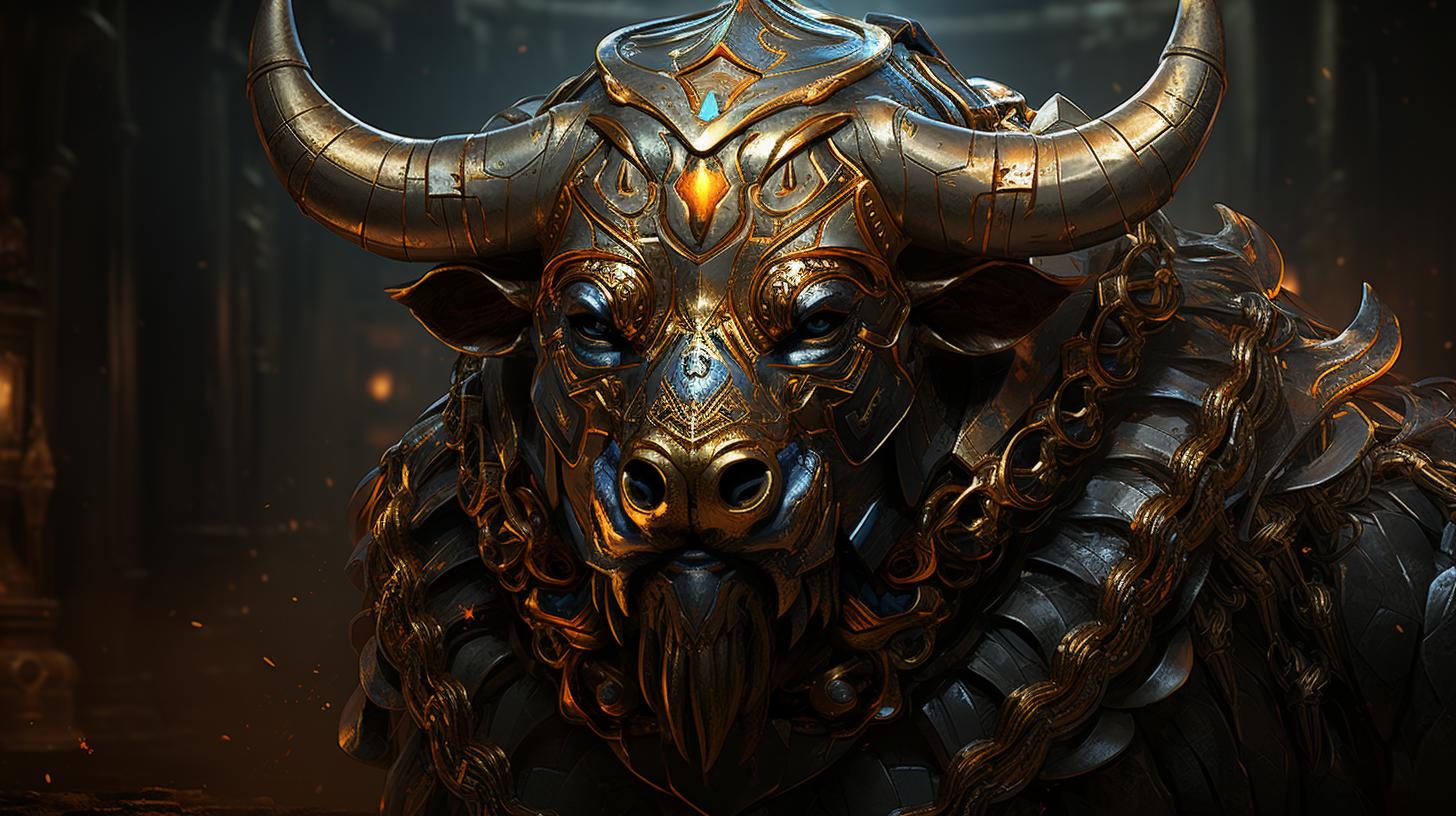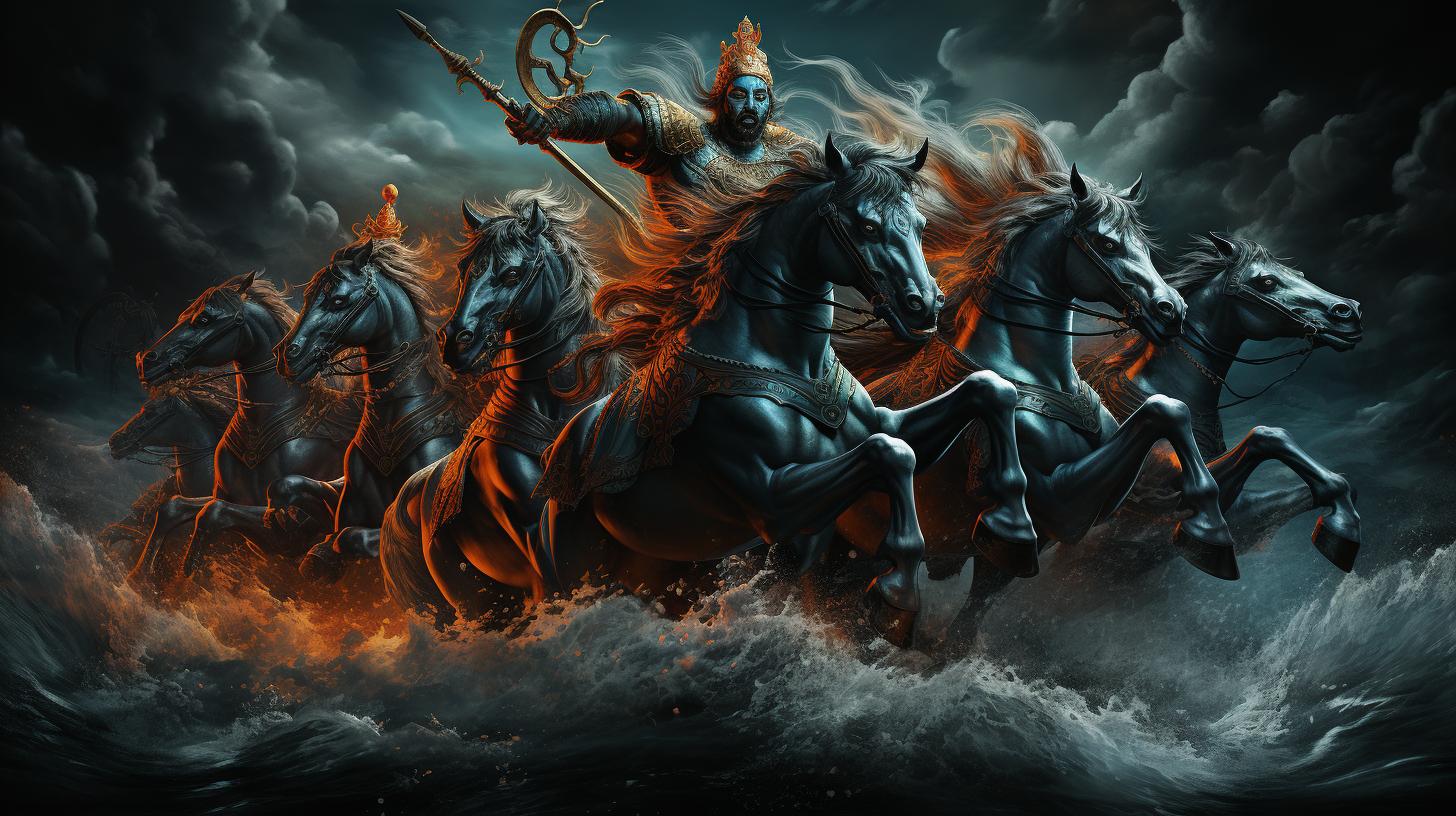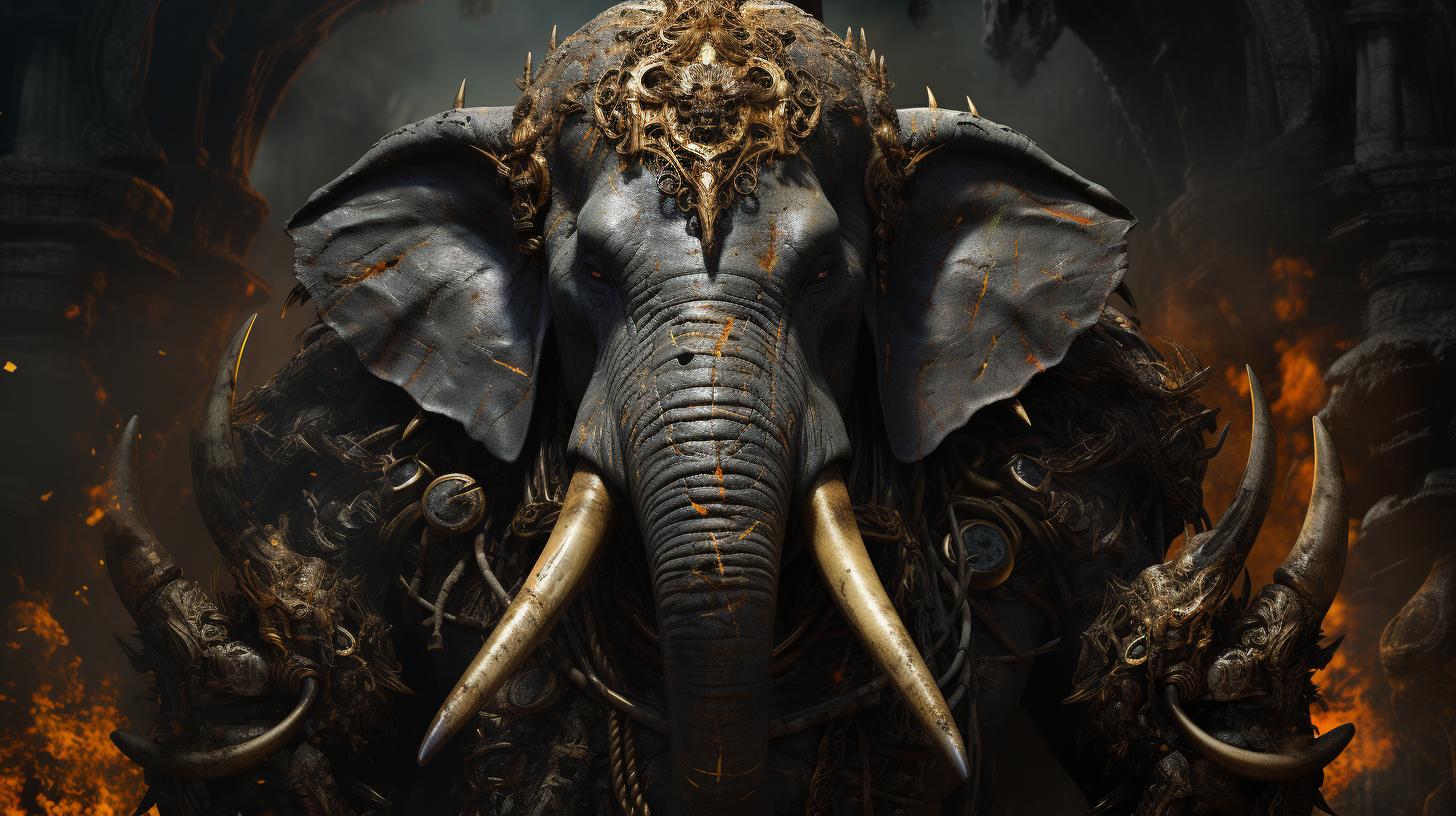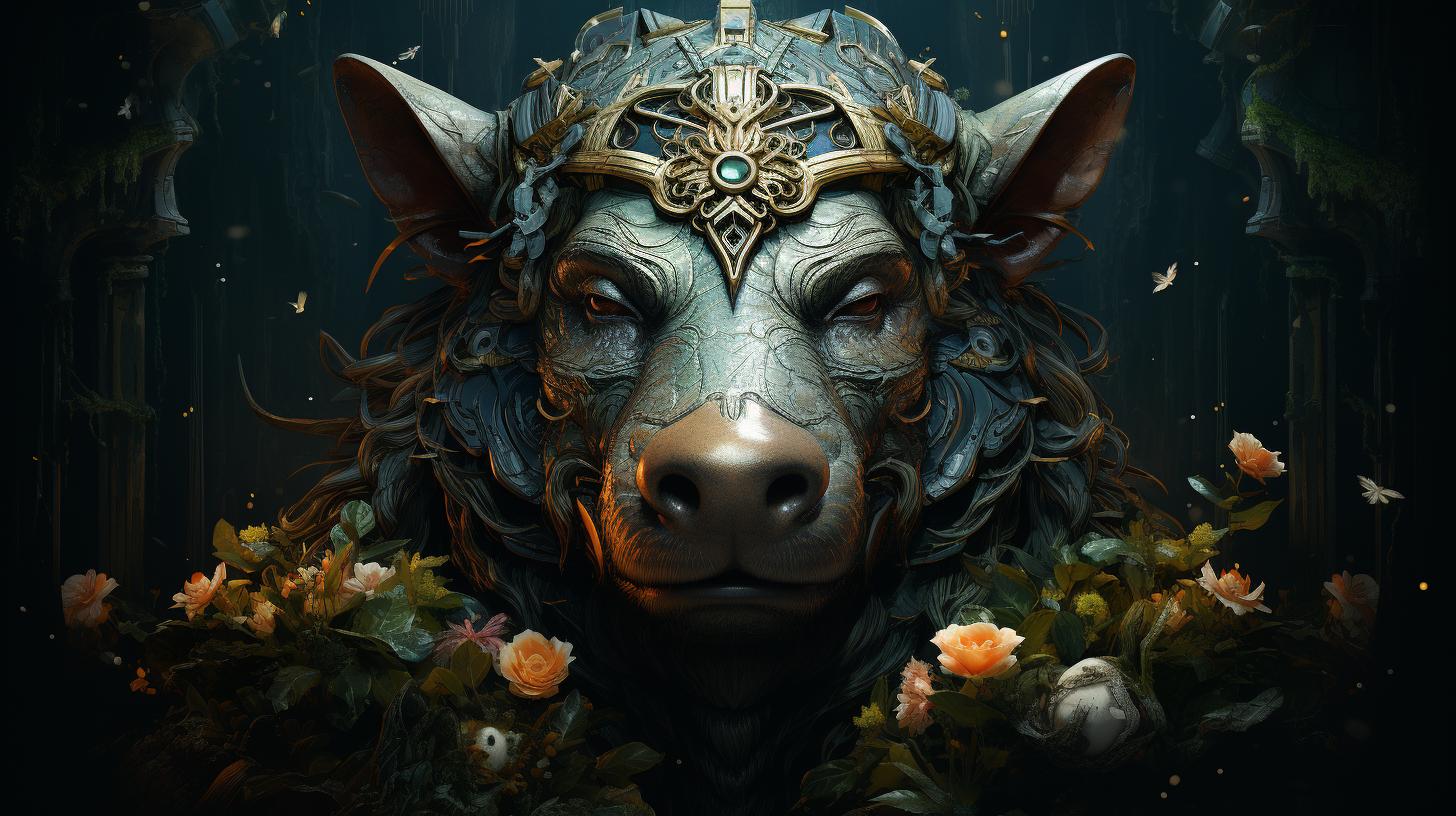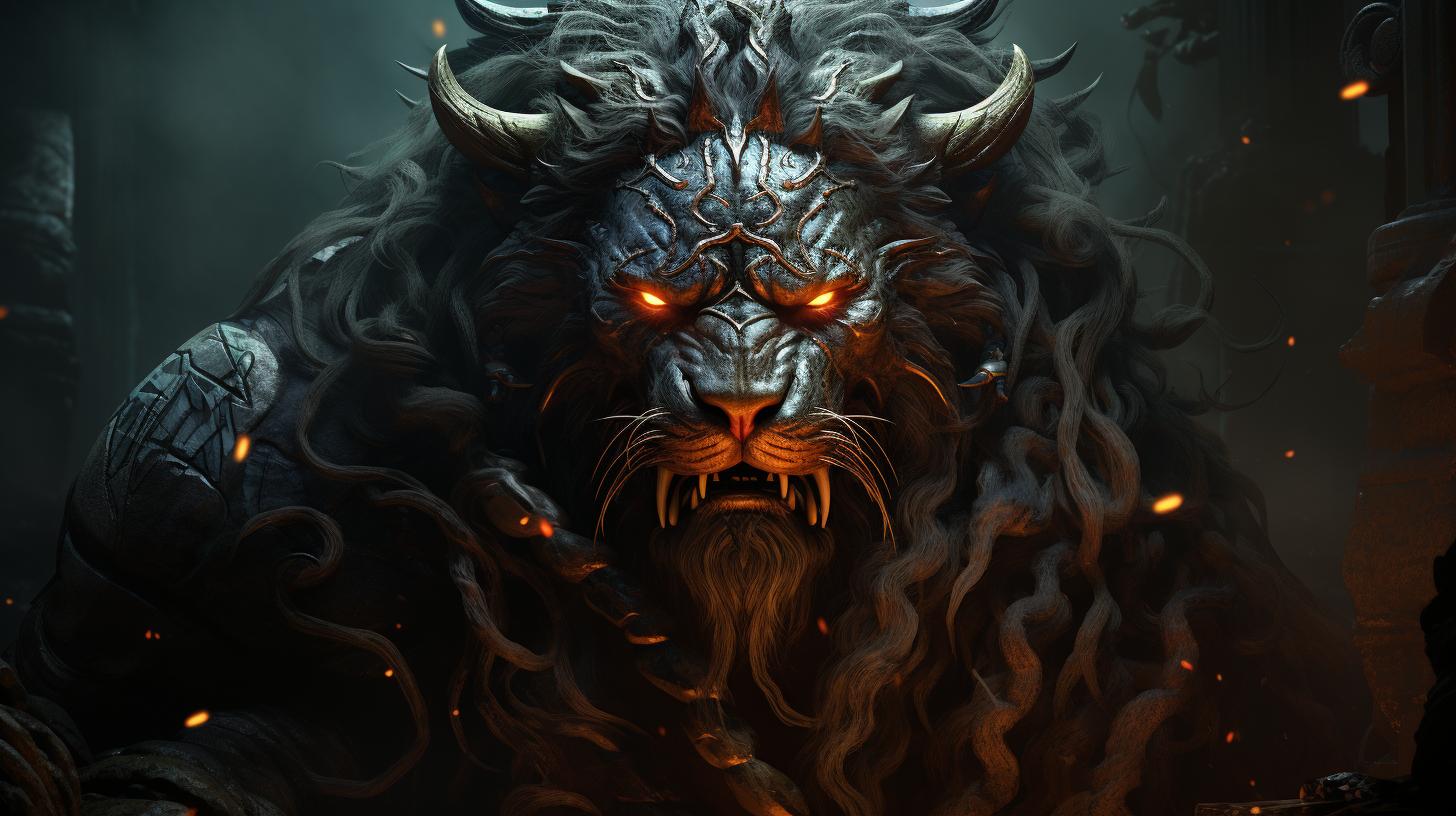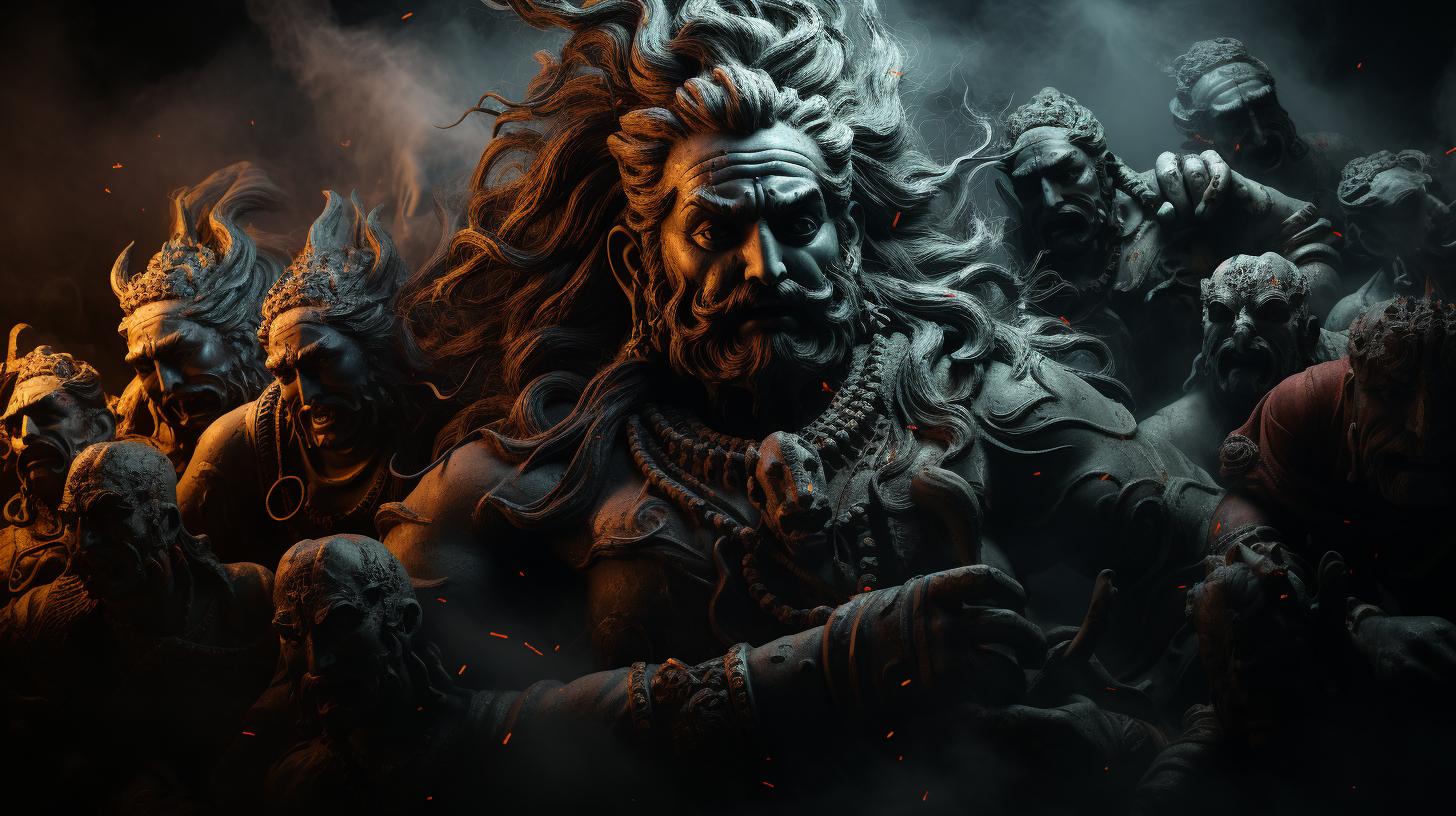The Divine Power of the Kamadhenu Cow: Exploring the Mystical Legend
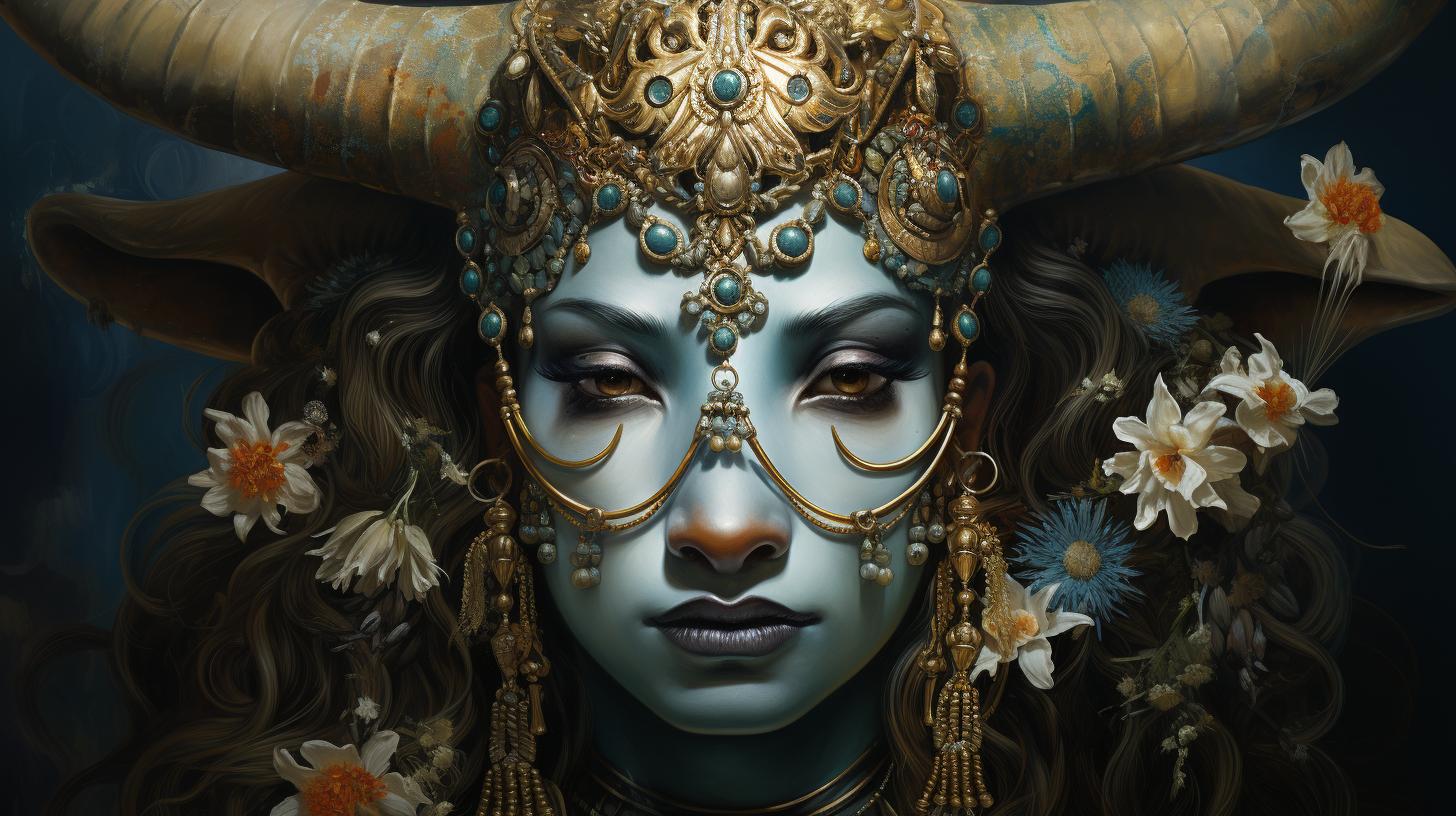
The Kamadhenu cow holds a significant place in Hindu mythology and religious practices. Considered a sacred divine cow, it is mentioned in ancient scriptures like the Mahabharata and the Ramayana.
Kamadhenu symbolizes prosperity and abundance, and is associated with deities such as Lord Vishnu and Lord Shiva. It is worshipped in Hindu rituals and plays a role in Indian culture, particularly in relation to agriculture, festivals, and art.
Curious to learn more about Kamadhenu? Read on to explore its legends, symbolism, worship practices, and its relevance in modern society.
The Legend of Kamadhenu Cow in Hindu Mythology
The Kamadhenu cow holds a significant place in Hindu mythology, being revered as a sacred and divine entity. This section explores various aspects of the Kamadhenu cow, including its origin, mythological references, significance in Hinduism, and symbolism.
Kamadhenu: The Sacred Divine Cow
Kamadhenu is a revered cow known as the fulfiller of all wishes and desires. It is believed to possess supernatural abilities and the power to grant boons. According to Hindu mythology, Kamadhenu is considered the mother of all cows and is revered as a symbol of ultimate abundance.
The Birth and Origin of Kamadhenu
The legend surrounding the birth of Kamadhenu varies across Hindu scriptures. One popular belief is that Kamadhenu emerged during the churning of the cosmic ocean (Samudra Manthan) by the gods and demons.
In another version, Kamadhenu is said to have been created by Lord Brahma himself.
Mythological References in Hindu Scriptures
Mythological tales in Hindu scriptures vividly describe Kamadhenu’s presence and significance. In the epic Mahabharata, Kamadhenu plays a pivotal role in various narratives, including the story of Sage Vashishta and King Vishwamitra.
The Ramayana also mentions Kamadhenu’s association with sage Vasishtha and his ashram.
Kamadhenu in the Mahabharata
In the Mahabharata, Kamadhenu is believed to have bestowed immense wealth upon King Prithu, who ruled in an era when the Earth was barren. Kamadhenu is also revered as the mother of the divine cow Nandini, who played a significant role in countless legends.
Kamadhenu in the Ramayana
The Ramayana portrays Kamadhenu as a divine cow that beautifully epitomizes the virtues of purity, devotion, and compassion. She is associated with the ashram of sage Vasishtha and is revered as a symbol of prosperity and fulfilment of desires.
Kamadhenu’s Significance in Hinduism
Kamadhenu holds immense significance in Hinduism. It represents prosperity, fertility, and the divine feminine energy. It is believed that possessing a figurine or image of Kamadhenu at home brings abundance and good fortune.
Kamadhenu is also associated with the concept of dharma (righteousness) and is considered a symbol of virtuous living.
The Symbolism and Representations of Kamadhenu
Kamadhenu is often depicted as a cow with a celestial appearance, embellished with various divine attributes. It is commonly shown with multiple limbs, representing its divine nature. Kamadhenu’s horns symbolize fertility and power, while its udders symbolize abundance and nourishment.
Overall, the legend, symbolism, and representations of Kamadhenu cow in Hindu mythology signify its esteemed position as a divine and sacred entity associated with prosperity, fulfillment, and the blessings of abundance.
Kamadhenu in Hindu Deity Worship
Kamadhenu, the sacred divine cow, holds a significant place in Hindu deity worship. Devotees venerate Kamadhenu with utmost reverence, considering it a divine being capable of granting wishes and fulfilling desires.
The worship practices associated with Kamadhenu vary across different regions of India but generally involve rituals, offerings, and prayers.
Kamadhenu as a Deity and worship practices
Kamadhenu is revered as a deity in Hinduism, symbolizing fertility, prosperity, and abundance. Devotees honor Kamadhenu in various ways, including creating small altars or shrines within their homes, adorned with flowers, incense, and lamps.
They recite sacred mantras and offer milk, curd, ghee, and other auspicious items to seek blessings from this divine cow.
Kamadhenu’s Association with Hindu Gods
Within Hindu mythology, Kamadhenu is associated with several deities, prominently Lord Vishnu and Lord Shiva. According to religious texts, Kamadhenu emerged during the famous Samudra Manthan (Churning of the Ocean) episode, where it granted boons to the gods and fulfilled their wishes.
Kamadhenu is often depicted as an embodiment of the divine feminine energy.
Kamadhenu and Lord Vishnu
Kamadhenu is closely linked with Lord Vishnu, the preserver and protector of the universe. It is believed that Kamadhenu resides in Vaikuntha, the abode of Lord Vishnu. In many temples dedicated to Lord Vishnu, the image or idol of Kamadhenu is also worshiped, signifying blessings of prosperity and fulfillment.
Kamadhenu and Lord Shiva
Kamadhenu is also associated with Lord Shiva, the supreme god of destruction and rejuvenation. It is believed that Kamadhenu emerged as a result of Shiva’s divine power during the churning of the celestial ocean.
Kamadhenu’s presence in Shiva temples represents divine grace and fulfillment of desires.
The Depiction of Kamadhenu in Hindu Temples
Hindu temples often feature intricate carvings and images of Kamadhenu, showcasing its divine presence and significance. These depictions highlight Kamadhenu’s celestial nature, adorned with jewelry and divine attributes. Kamadhenu is usually shown with a beautiful cow-like body, often accompanied by a calf, symbolizing the nurturing and maternal aspect of divinity.
Offerings and Rituals in Kamadhenu Temples
Devotees visiting temples dedicated to Kamadhenu engage in various rituals and offerings. They seek blessings by pouring milk or performing abhishekam (ritual bathing) to the sacred idol of Kamadhenu. Additionally, devotees may offer flowers, fruits, and other auspicious items as tokens of devotion and gratitude.
Overall, Kamadhenu’s presence in Hindu deity worship showcases its revered status as a bestower of blessings, prosperity, and fulfillment. By honoring and seeking the divine grace of Kamadhenu, devotees strive to attain spiritual well-being and abundance in their lives.
Kamadhenu’s Role in Hindu Culture and Society
The divine Kamadhenu cow holds a significant role in Hindu culture and society, representing various aspects that are revered and celebrated. Let’s explore its significance in different domains:
Kamadhenu as a Symbol of Prosperity and Abundance
- With its ability to fulfill wishes and grant boons, Kamadhenu is regarded as the embodiment of prosperity and abundance.
- It symbolizes the blessings of a bountiful life, fertility, and material well-being.
- Devotees believe that revering Kamadhenu can bring good fortune and success in various endeavors.
Kamadhenu’s Connection with Agriculture and Cattle Rearing
- In Hindu mythology, Kamadhenu is associated with the nourishment and sustenance provided by cows in the agrarian economy.
- It represents the essential role of cows in agriculture, providing milk, fertilizer, and labor.
- Kamadhenu’s presence signifies the importance of treating cattle with care and respect, promoting sustainable farming and animal husbandry principles.
Kamadhenu and its Significance in Festivals and Ceremonies
- Kamadhenu’s revered status is prominently highlighted during various Hindu festivals and ceremonies.
- During occasions like Pongal and Gopashtami, rituals and prayers are performed to honor the divine cow and express gratitude for its blessings.
- These festivities serve as a reminder of the inseparable link between Kamadhenu, cultural traditions, and celebration of agricultural abundance.
Kamadhenu’s Influence on Art and Literature
- The presence of Kamadhenu is widely depicted in Indian art, showcasing its cultural importance and deep-rooted symbolism.
- Paintings, sculptures, and murals featuring Kamadhenu adorn temples, showcasing its role as a muse for creativity and inspiration.
- Additionally, Kamadhenu’s mention in ancient scriptures has inspired poets, writers, and storytellers to narrate its legends and convey its significance through literature.
The Modern-day Perception and Relevance of Kamadhenu
- While Kamadhenu holds rich historical and mythological significance, its relevance persists in modern society.
- People continue to worship Kamadhenu as a symbol of abundance, seeking its blessings for prosperity in their lives.
- Moreover, the sustainable farming practices promoted by Kamadhenu’s association with cattle rearing align with the growing focus on environmental consciousness and ethical agriculture.
In conclusion, Kamadhenu plays a vital role in Hindu culture and society, symbolizing prosperity, connecting with agriculture, enlivening festivals, inspiring art, and maintaining its relevance in modern times.
Its significance encompasses various aspects of life, highlighting its enduring presence in the hearts and minds of devotees.
Kamadhenu: Frequently Asked Questions
Here are some frequently asked questions about Kamadhenu, the sacred divine cow:
What is the significance of Kamadhenu in Hindu mythology?
Kamadhenu holds great significance in Hindu mythology as the divine cow that grants wishes and fulfills desires. It symbolizes prosperity, abundance, and fertility. Its presence represents the embodiment of all that is sacred and auspicious.
Are all cows considered sacred in Hinduism?
In Hinduism, cows are considered sacred and are revered as a symbol of life, maternal qualities, and divine benevolence. Their gentle nature and contribution to agriculture make them highly valued in Indian culture.
How is Kamadhenu worshipped in Hindu rituals?
Kamadhenu is worshipped in Hindu rituals with utmost devotion and reverence. Offerings of flowers, incense, and special cow-related items are made to honor and seek the blessings of Kamadhenu. Prayers and hymns are recited, and the act of serving cows is considered a virtuous act of worship.
Is Kamadhenu associated with any specific Hindu gods?
Kamadhenu is associated with various Hindu deities. It is often depicted alongside Lord Vishnu, the Preserver of the Universe, and revered as the divine mother of all cows. Kamadhenu is also connected with Lord Shiva, representing the nourishing aspect of creation.
What are the symbolic meanings attributed to Kamadhenu?
Kamadhenu holds multiple symbolic meanings in Hindu culture. It represents fertility, prosperity, and the ability to fulfill desires. Additionally, Kamadhenu symbolizes maternal love, nourishment, and the divine blessings of abundance and well-being.
How does Kamadhenu contribute to the agricultural sector in India?
Kamadhenu’s connection with cows and agriculture is deeply rooted in Indian society. Cows provide milk, which is an essential part of the diet, and their dung is used as organic fertilizer.
Cattle also play a crucial role in plowing fields and transporting agricultural produce.
What role does Kamadhenu play in Indian festivals and traditions?
Kamadhenu plays a significant role in Indian festivals and traditions, particularly during events like Gopashtami and Govardhan Puja. Cows are worshipped, adorned with garlands, and given special treats, as a way of expressing gratitude for their contributions to human life and sustenance.
How has Kamadhenu been depicted in Indian art and literature?
Kamadhenu has been a prominent subject in Indian art and literature for centuries. It is often depicted in paintings, sculptures, and scriptures, showcasing its divine presence and the reverence it holds in society.
Kamadhenu’s representation highlights its majestic beauty and its ability to fulfill desires.
What is the current understanding and relevance of Kamadhenu in modern society?
In modern society, Kamadhenu continues to be valued as a symbol of abundance, prosperity, and the harmonious relationship between humans and nature. Its significance serves as a reminder of the importance of nurturing and protecting the environment, promoting sustainable agriculture practices, and respecting all living beings.
.

